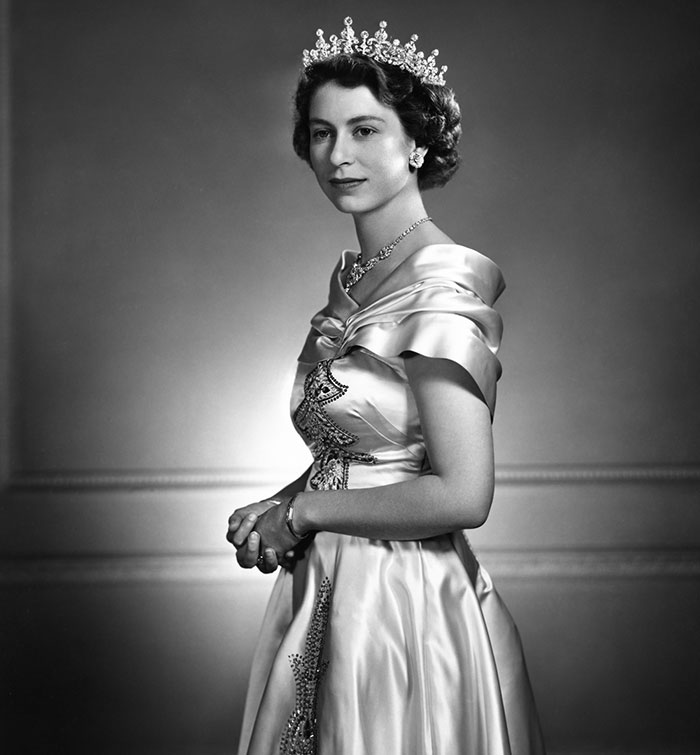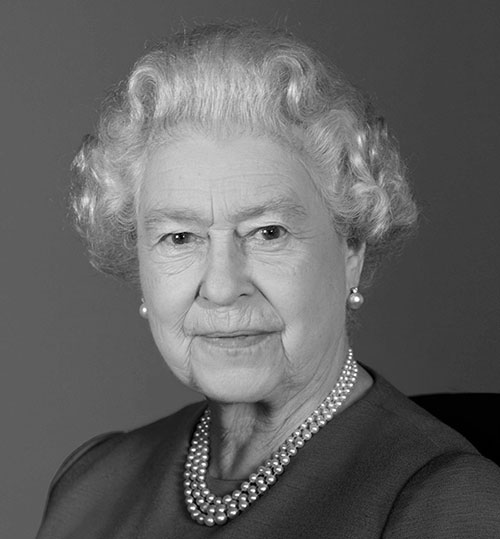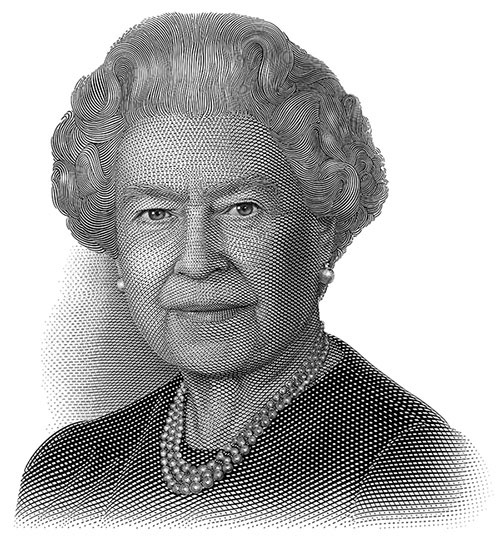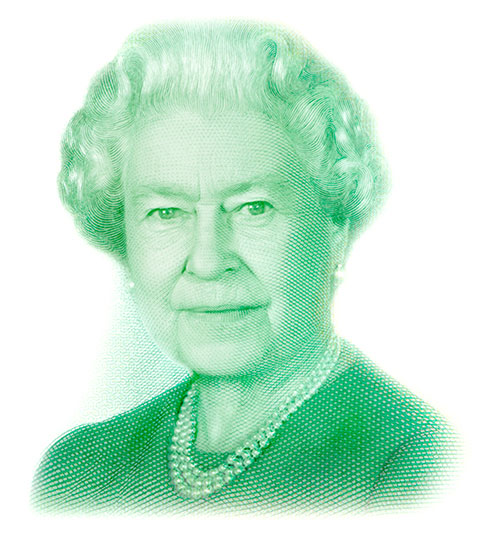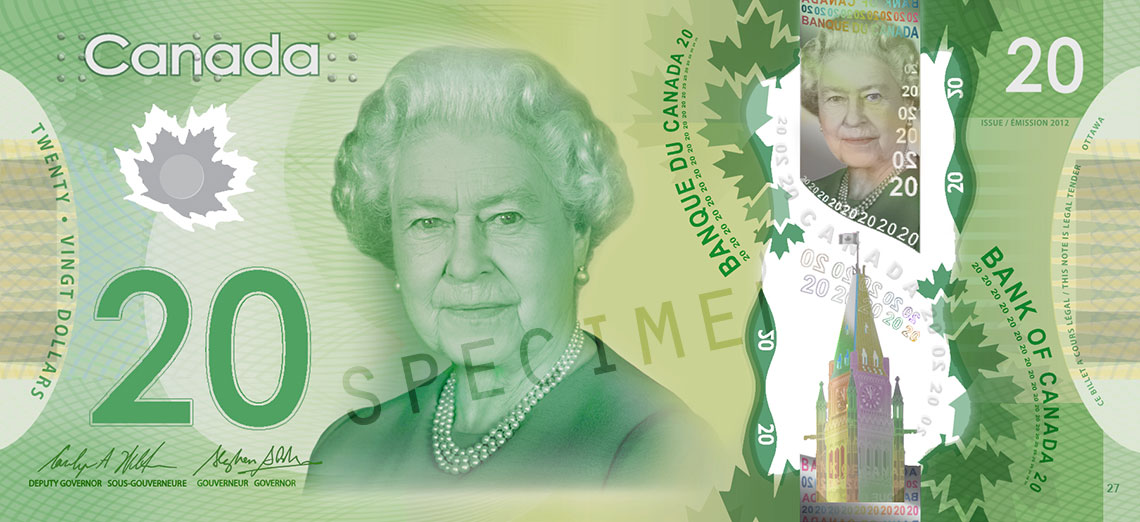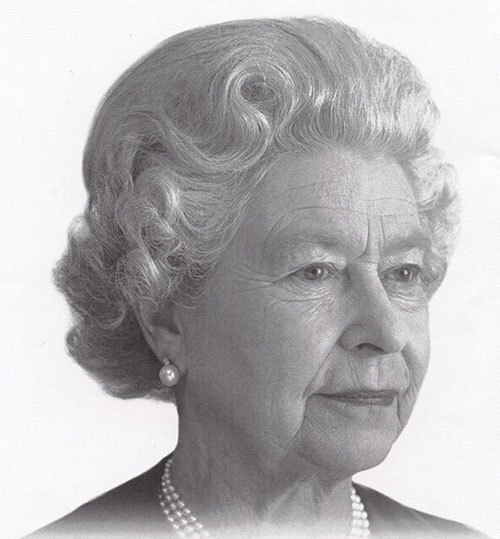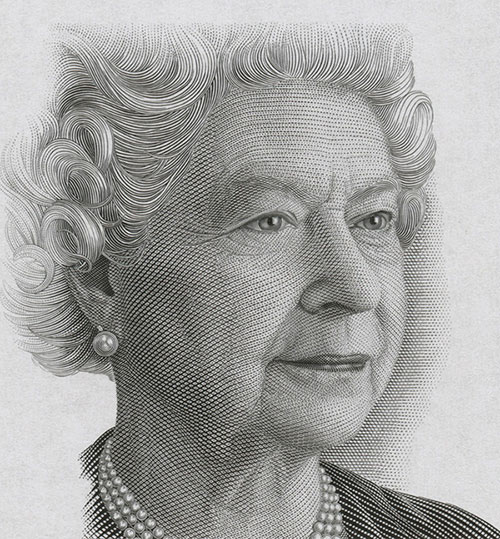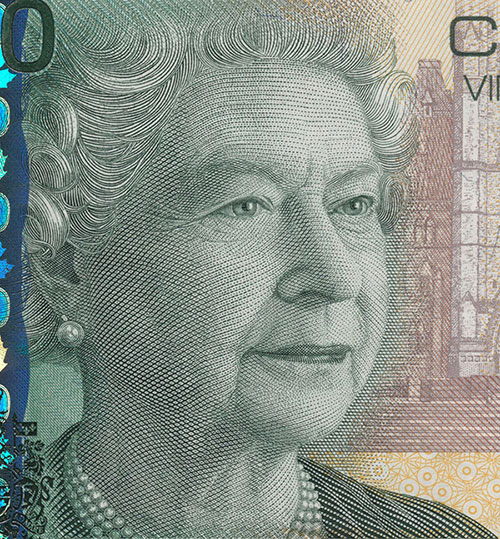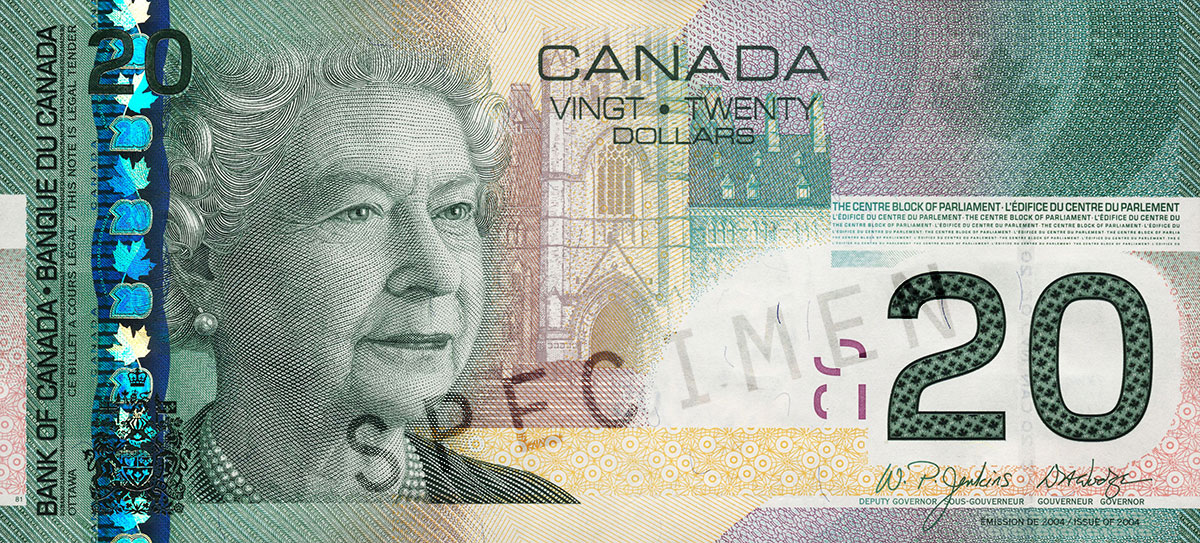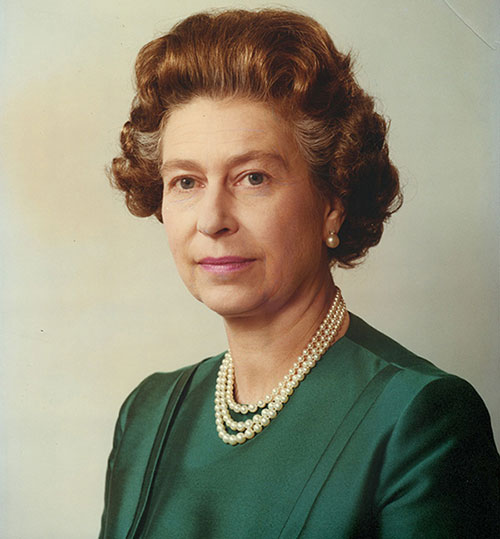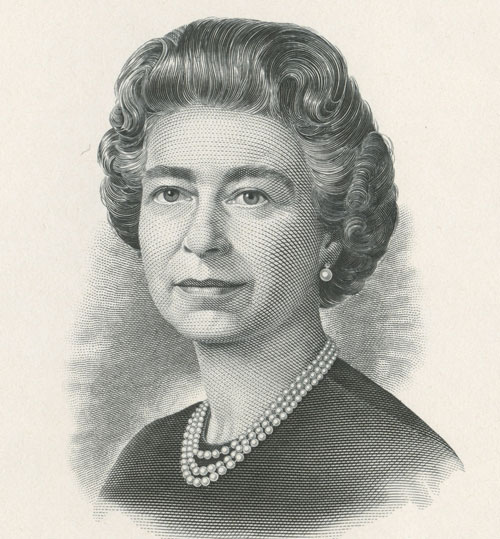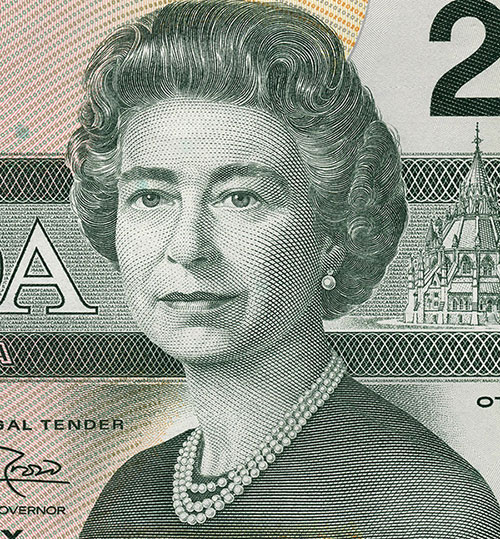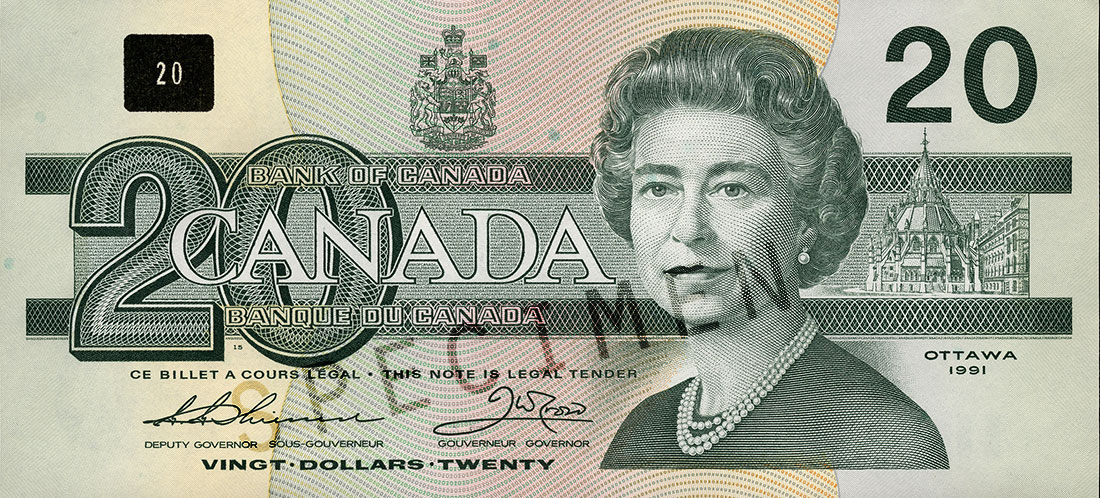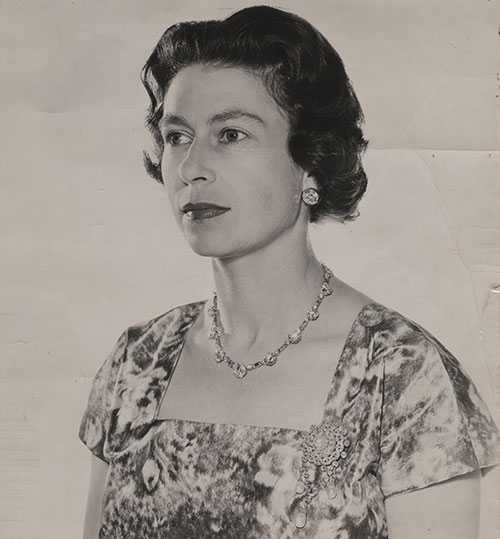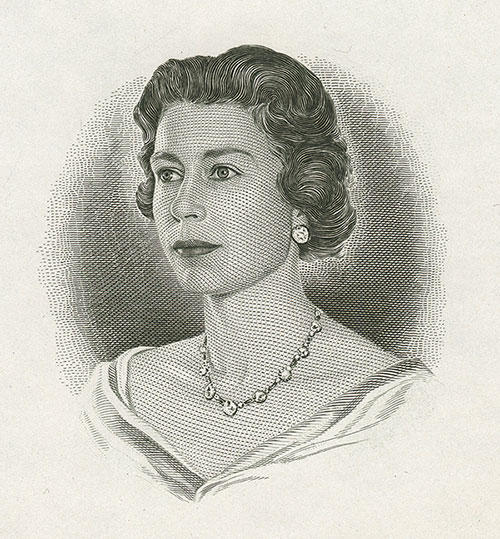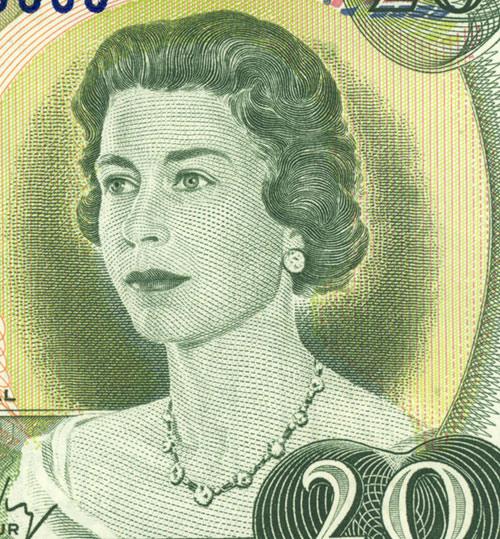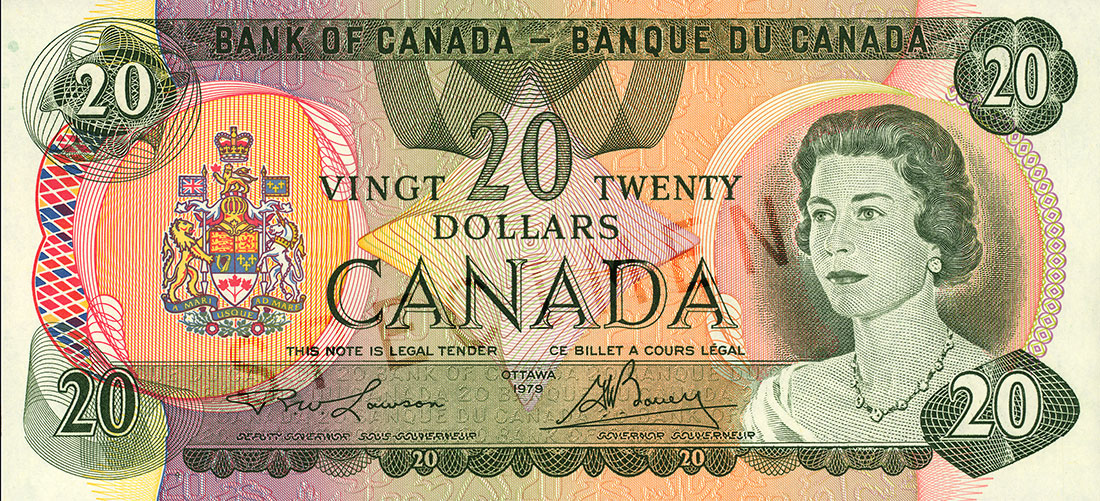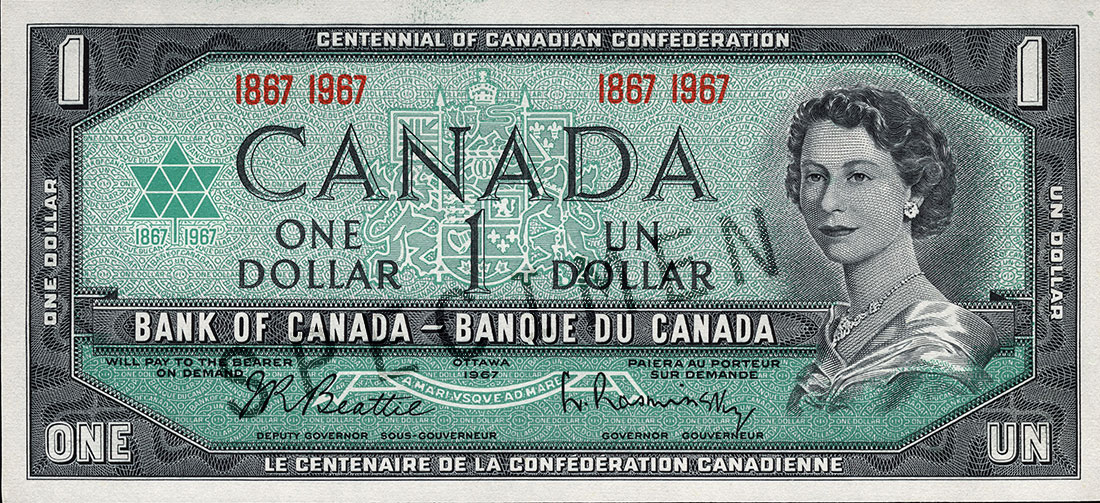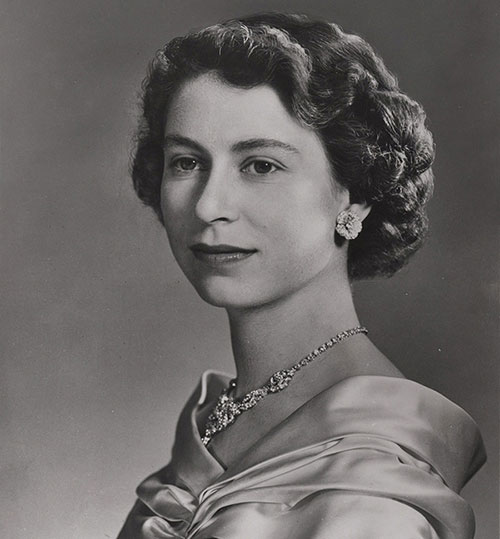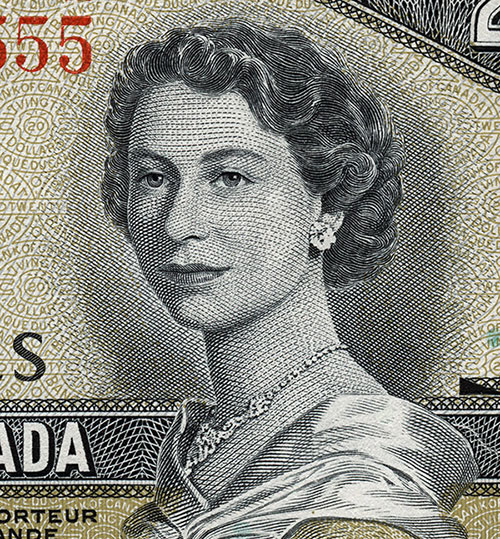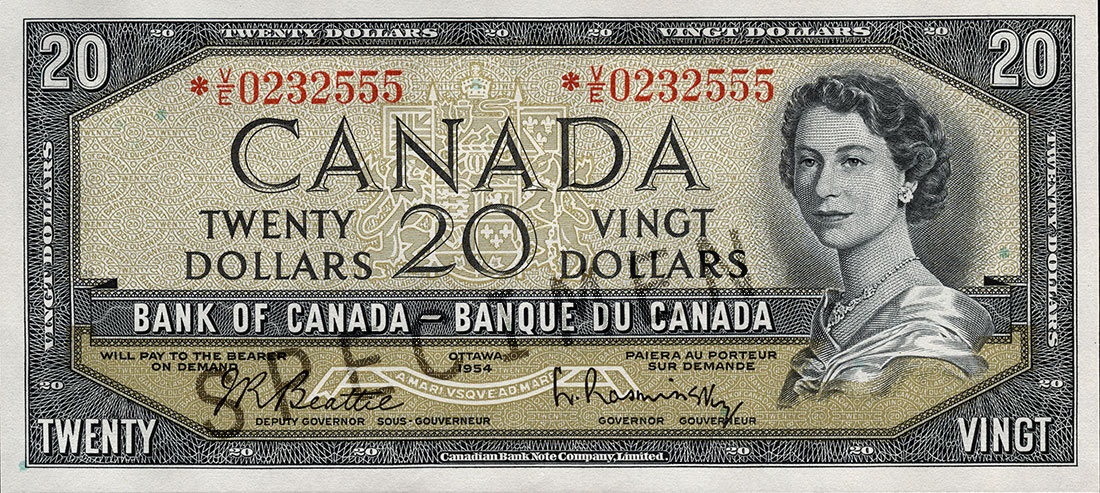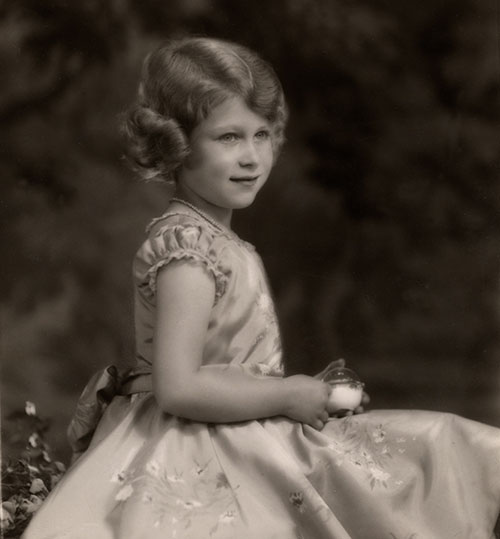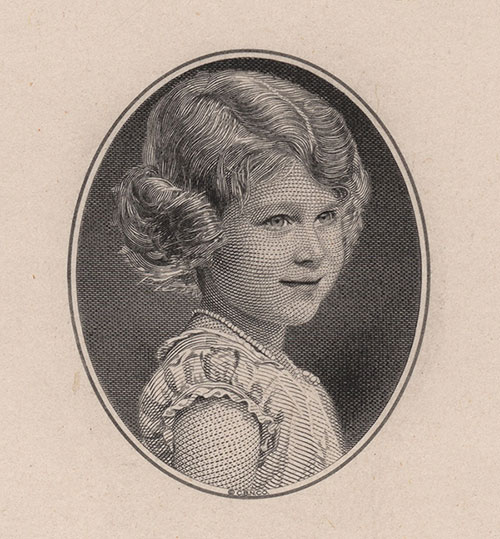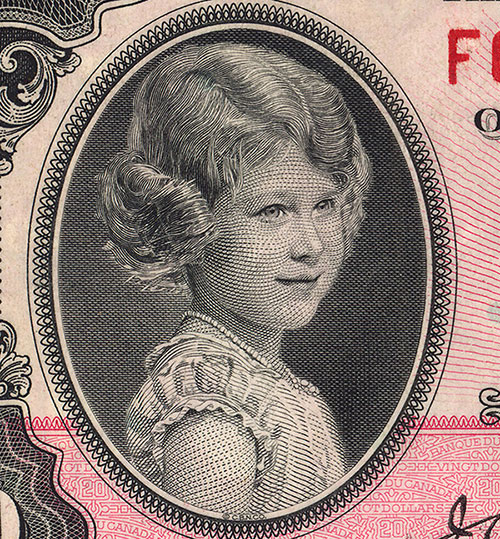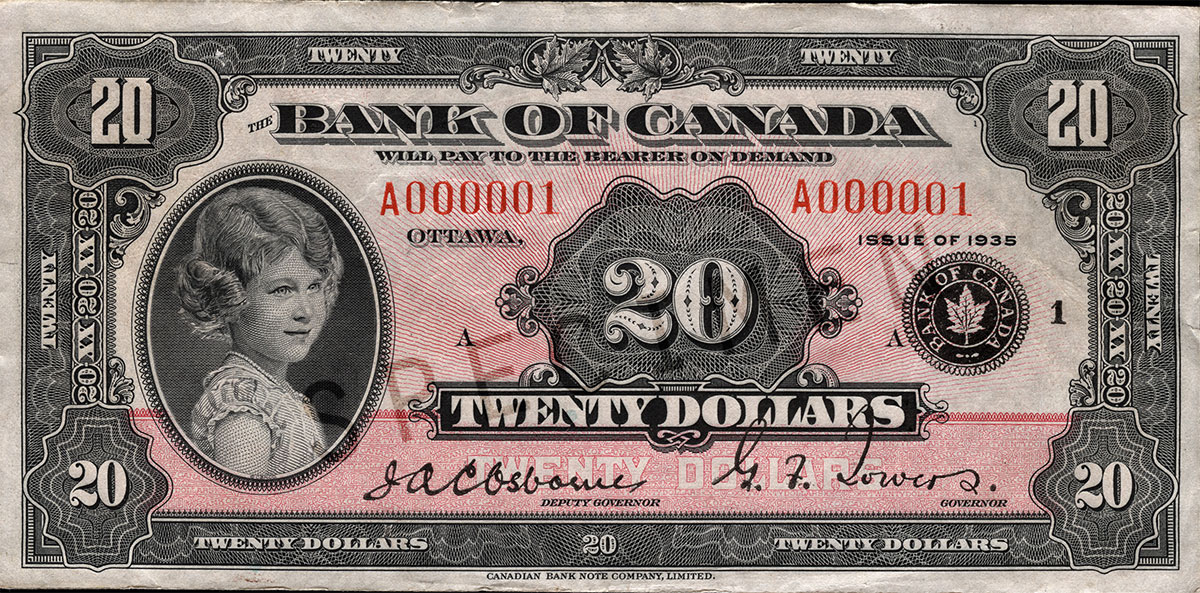Explore eight decades of portraits of Queen Elizabeth II on Canada’s bank notes. Also, learn about the design and security features of the Frontiers Series, and discover our earlier series.
Honouring the historic reign of Queen Elizabeth II
On 9 September 2015, Queen Elizabeth II became Canada's longest-reigning sovereign. In recognition of this historic milestone, the Bank issued a commemorative bank note that is a variation of the existing $20 note in the Frontiers series.
Her Majesty Queen Elizabeth II has been prominently featured on our bank notes throughout her reign. Since the Bank of Canada issued its first series of notes in 1935, several portraits of Her Majesty throughout her life and long reign have appeared on our currency. This look back at her portrayal over the decades celebrates her long-standing relationship with the Bank and enduring ties to our country.
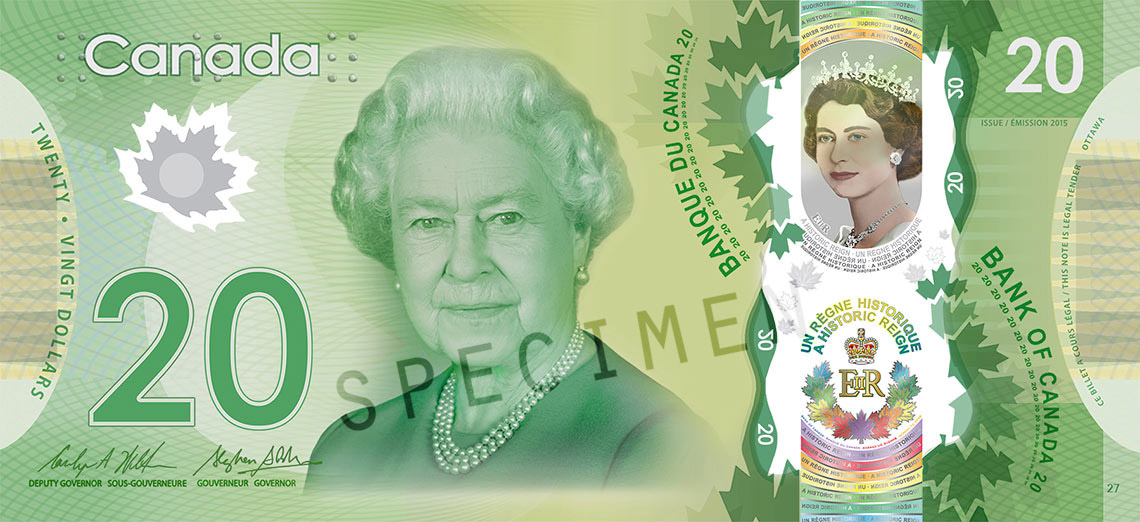
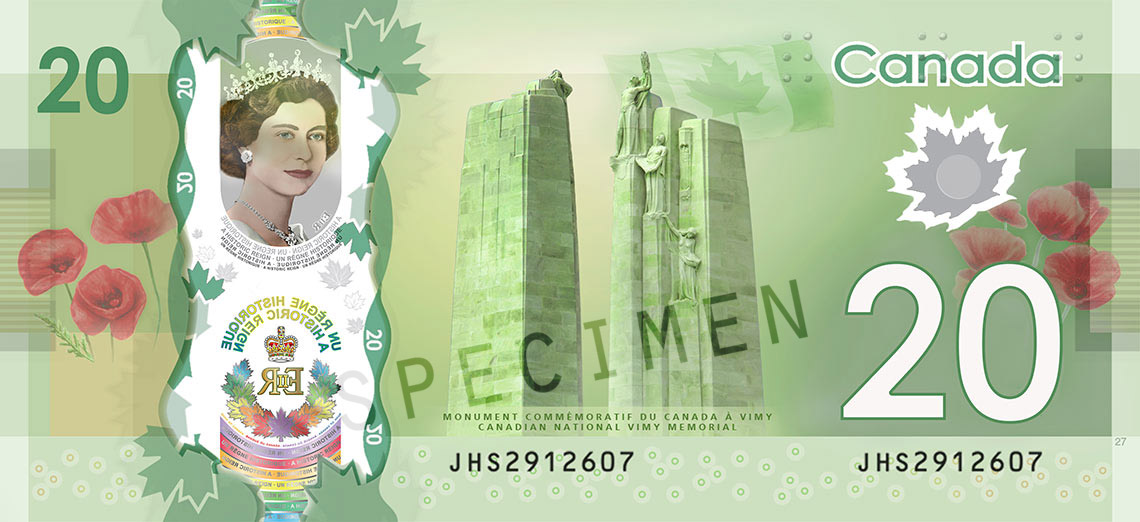
2015 commemorative note
The commemorative note features a full-colour metallic portrait of the Queen in the large window. This is the first and only time she is shown wearing any type of crown on a Canadian bank note. It is accompanied by a depiction of her Royal Cypher, a garland of maple leaves and the inscription “A Historic Reign • Un règne historique.”
The portrait is based on a 1951 picture by renowned Canadian photographer Yousuf Karsh. It was taken within six months of the Queen’s accession to the throne, which makes it a compelling choice for commemorating her historic reign. The same photo, with her tiara removed, was previously used for the 1954 Canadian Landscape series as well as for a commemorative note in 1967 marking Canada’s centennial.
The Karsh photograph was originally commissioned for a Canadian postage stamp and then modified for use by the Bank of Canada.
Frontiers series (2011–13)
The engraving for the printed portrait on the $20 note in the Frontiers series issued in 2012 was created by Jorge Peral, Vice-President of Design and Master Engraver at the Canadian Bank Note Company. It is based on a photograph taken by Ian Jones that was specially commissioned by the Bank and replicated for the holographic image.
Similar to the 2015 commemorative note, a metallic portrait of the Queen appears in the large window of the original $20 note in the Frontiers series. This holographic image is one of the cutting-edge security features that make this series difficult to counterfeit.
Find out more about the design and security features that adorn Canada’s polymer notes.
The engraving of the Queen for the $20 note in the Canadian Journey series was prepared by Jorge Peral from a photograph by Charles Green, commissioned by the Bank specifically for this note. Peral also designed the note concepts for all denominations in this series, in collaboration with BA International.
This Canadian Journey $20 note featuring the Queen on the front won “Bank Note of the Year” for 2005 from the International Bank Note Society, which described the image as “probably the finest portrait of the mature monarch to appear on any bank note.”
The engraving of Her Majesty for the Birds of Canada series was created by Henry S. Doubtfire of the De La Rue Company based on a portrait by photographer Anthony Buckley. In addition to the $20 note, this engraving appeared on two other denominations in the series—the $2 note and the $1,000 note—both of which have been discontinued in more recent series. The intricate line work in the larger portrait emphasized intaglio printing as an important security feature.
In the image, the Queen wears pearls she received from her grandfather, George V. These pearls also appear in her Canadian Journey and Polymer series portraits. Among the dozens of engravings created of the Queen, this one was featured exclusively on the Birds of Canada series notes.
The Birds of Canada series broke from earlier Canadian design tradition by featuring larger portraits on the front of the notes. This was one of the features, along with the use of distinct colours and oversized numbers, that improved note recognition and legibility for the partially sighted.
The engraving of the Queen for the Scenes of Canada series was produced by George Gundersen of the British American Bank Note Company from a photograph by Anthony Buckley. This image of the Queen appeared on the $20 note, $2 note and the last $1 note issued before the introduction of the $1 coin (the “loonie”) in 1987, as well as on notes from the Solomon Islands.
While in the original photograph the Queen’s attire is less formal, she wears diamonds gifted to her in 1947 by the people of South Africa. The engraver kept the diamonds but redrew the dress to formalize the portrait for a bank note.
The Scenes of Canada series remains the most colourful Canadian bank note series. The $20 note, featuring an image of the Queen, was first issued in 1970. In 1979, another version was produced with the serial numbers on the back and with slight modifications to the colours and the motif at the centre top to further differentiate it from the $1 note.
The 2015 commemorative note marks the second time that a portrait of Queen Elizabeth II appears on a special note. In 1967, this variant of the $1 note from the Canadian Landscape series of 1954 was issued to honour the 100th anniversary of Canadian Confederation. The 1967 note featured the centennial symbol and the words “Centennial of Canadian Confederation” in French and English on the borders. To appeal to collectors, some notes had the years “1867 1967” in place of serial numbers.
The source photograph for the Queen’s portrait on the $20 note in the Canadian Landscape series is the same 1951 picture by Yousuf Karsh that was used in the large window on the 2015 commemorative note.
For the 1954 series, the Girls of Great Britain and Ireland Tiara was removed to distinguish Her Majesty’s portrait from another, based on the same photograph, that had recently been featured on a Canadian stamp. The retouch was completed by the graphic arts firm Brigdens of Toronto. The engraving, based on the modified image, was created by George Gundersen.
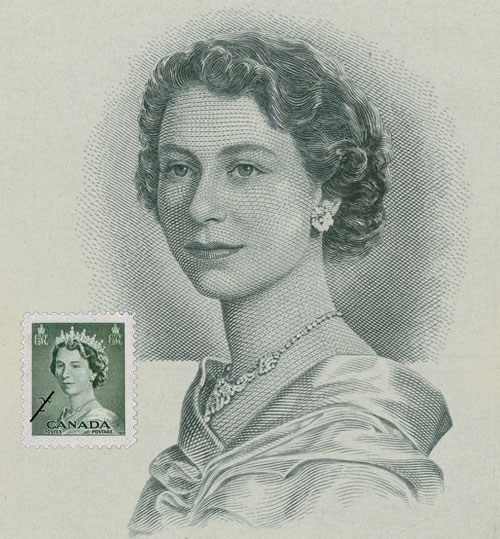
Queen Elizabeth II, original engraving by George Gundersen (1910–75) with addition of stamp for this composite (© Canada Post 1953), portrait die proof (revised), 1956, printed by British American Bank Note Co., acquired in 2009 from Bank of Canada Department of Banking Operations, National Currency Collection, #2009.0014.00039
Her Majesty’s likeness was featured on every denomination of the 1954 Canadian Landscape series. The Bank updated the design of its notes from the 1937 series: the portrait was moved to the right side and the decorative Victorian-style flourishes were replaced with more contemporary lines. This series also introduced the Canadian coat of arms on the front of the notes, reflecting the country’s growing sense of nationalism.
Her Majesty’s first appearance on a Canadian bank note occurred long before she acceded to the throne. A $20 note with a portrait of an eight-year-old Princess Elizabeth, granddaughter of then King George V, was part of the Bank’s inaugural series issued in 1935. It is the only portrait of the future queen as a young girl to appear on a bank note.
The engraving, produced by Edwin Gunn of the American Bank Note Company, was based on a photograph of the princess by Marcus Adams, a royal photographer who captured many images of the future queen when she was a child. He used a “toy cabinet camera” to capture this type of candid shot of children at his London studio.
The 1935 series is the only one to feature non-reigning members of the royal family and for which unilingual English and French notes were produced.
